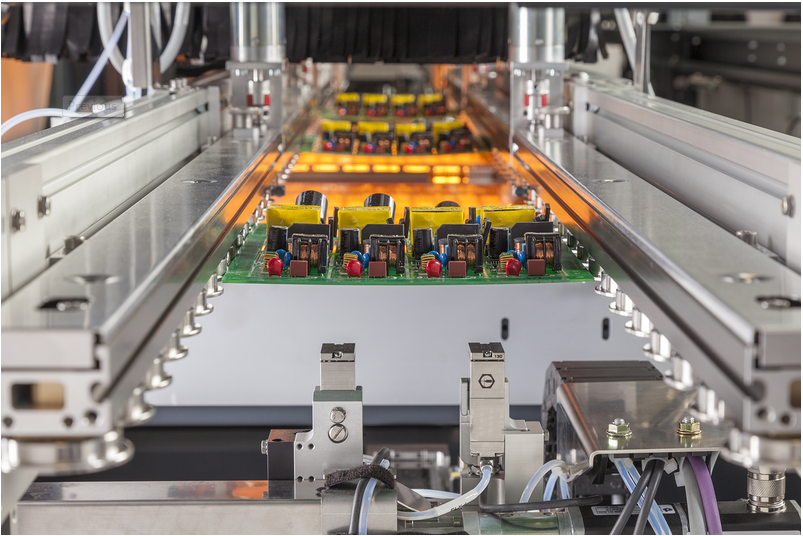Adjustment of SMT lead-free reflow soldering temperature curve
Release time:2024-04-08Publisher:Jeenoce
For SMT lead-free reflow soldering, adjusting the temperature curve is a hot topic of discussion and a complex technical problem. The temperature curve of this solder paste factory provides a reference curve, but in reality, the quality of SMT lead-free reflow soldering varies greatly, making it difficult to achieve the welding effect of their reference furnace temperature curve. We not only need to know how to adjust the SMT lead-free reflow soldering furnace temperature curve, but also know the working principle of solder paste and SMT lead-free reflow soldering furnace. JEENOCE will briefly analyze and explain the technical principle of SMT lead-free reflow soldering temperature curve here.
Technical factors of SMT lead-free reflow soldering temperature curve
Due to stricter restrictions on solder paste specifications and concerns about device damage at higher process temperatures, in order to utilize lead-free solder, we must pay attention to different temperature curves and equipment settings. Two common types of temperature curves are used in reflow soldering processes and are commonly referred to as the soak profile and the tent profile temperature curves. The wetting temperature curve is a process that allows the assembled components to remain at a temperature exactly below the liquefaction point of the solder for a period of time, in order to obtain a uniform component temperature. The "tent" type temperature curve is a continuous temperature slope, starting from the component entering the lead-free reflux furnace and reaching the desired temperature value.

Considering the type of solder paste used and the structure of the components, the actual temperature curve may vary. Based on the chemical composition of the solder paste, the solder paste manufacturer will provide recommendations for a suitable temperature curve to achieve optimal performance.
Due to the high melting point of lead-free solder, there will be some changes in the temperature curve requirements, so there will also be some changes in the setting of SMT lead-free reflux equipment. A basic change is the need for a flatter temperature curve during the reflux period. Due to the smaller process window, the requirements for value temperature and time above liquefaction temperature (TAL) must be met, while not causing overheating of components or devices. A long reflux area and efficient heat conduction for the product are necessary.
The problem of using two temperature zones for reflux or using opposite value climbing methods in the reflux temperature zone can be solved. When using this method, the second to last heating zone is maintained at a higher temperature compared to the last heating zone, thereby faster heat transfer to the board. The latter temperature zone is used to maintain a uniform temperature on the component.
Factors to consider for heat conduction in SMT lead-free reflow soldering equipment
There is a hypothesis that a high-temperature reflux furnace is necessary for lead-free, but this is not always the case in reality. More importantly, the efficiency of the device in transmitting energy to the components.
Some SMT lead-free reflow soldering systems enhance thermal conductivity by wrapping the product in a uniformly mixed heating gas. The design of a heated air inlet allows for heating and mixing of gases in three vertical air intake areas. The central air inlet adopts a cylindrical heating unit with fins, which transfers heat from the heater to the gas. This method can reduce the wattage of the heater, which means it reduces energy consumption. This heating design can significantly reduce energy consumption by 50% compared to traditional reflux solutions.
The heated gas is mixed through the air supply unit and generates a moderate negative pressure behind the pressure plate. This moderate pressure can generate a uniformly covered concentric circular airflow, which can transfer heat to the required process plane of the product. Another advantage of this design is that it can achieve isolation between temperature zones, thereby better controlling the temperature curve of the processed product.
Cooling products is important in reflow soldering and heating samples. Excessive liquid time and end temperature can cause damage to products and components. Therefore, the system must be designed with programmable control of cooling parameters.
When using a nitrogen system, it is necessary to cool the gas to remove heat from the product. A cooling medium, such as water, is a good choice. This type of water cooling system should also be easily implemented in the design. For example, there is cooling water passing through a vertically installed heat exchanger inside, allowing the residual flux to be naturally discharged into the flux collection tank by gravity. The connection of cooling water is obtained through quick connectors (quick connectors) that require tools for disassembly and assembly.

